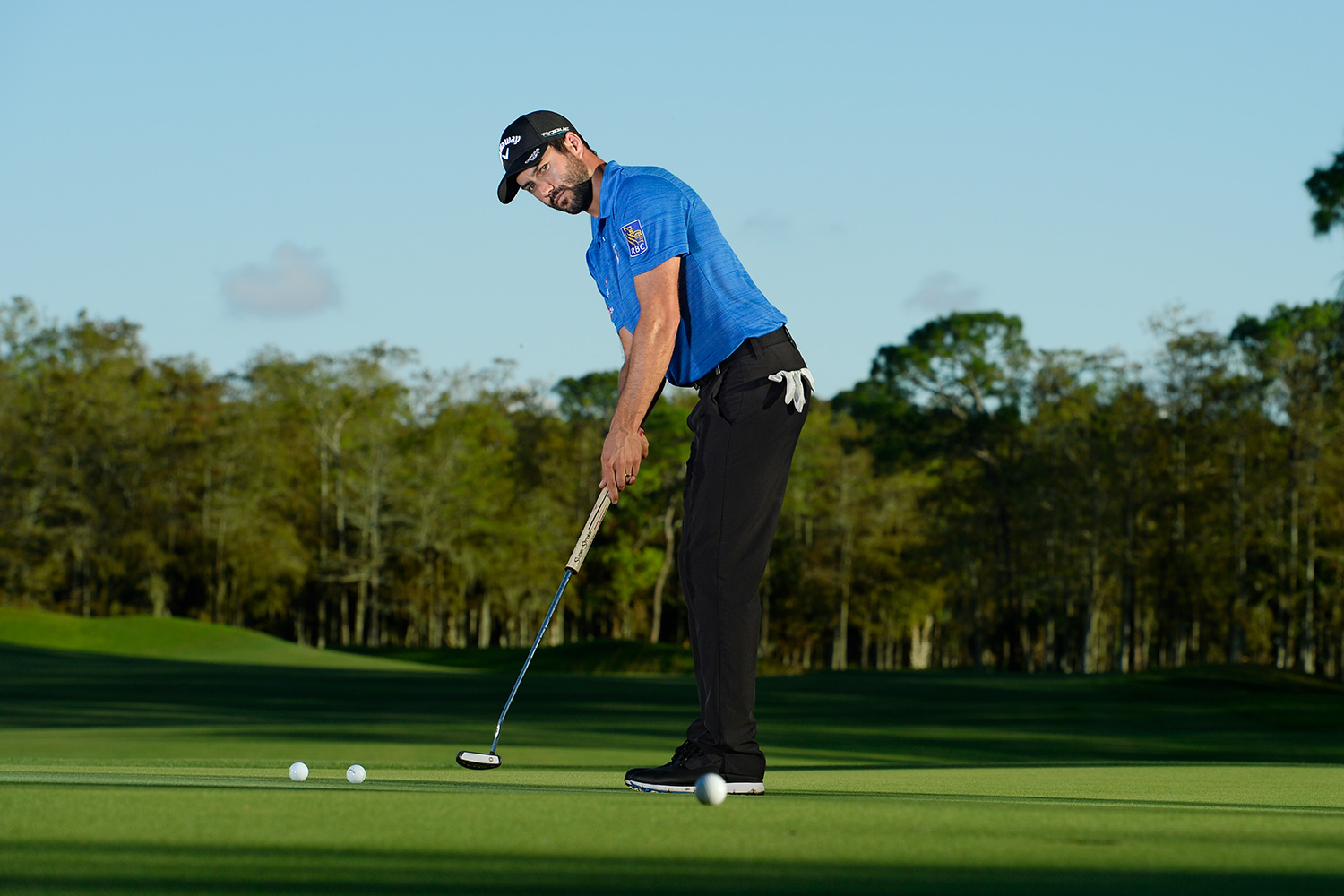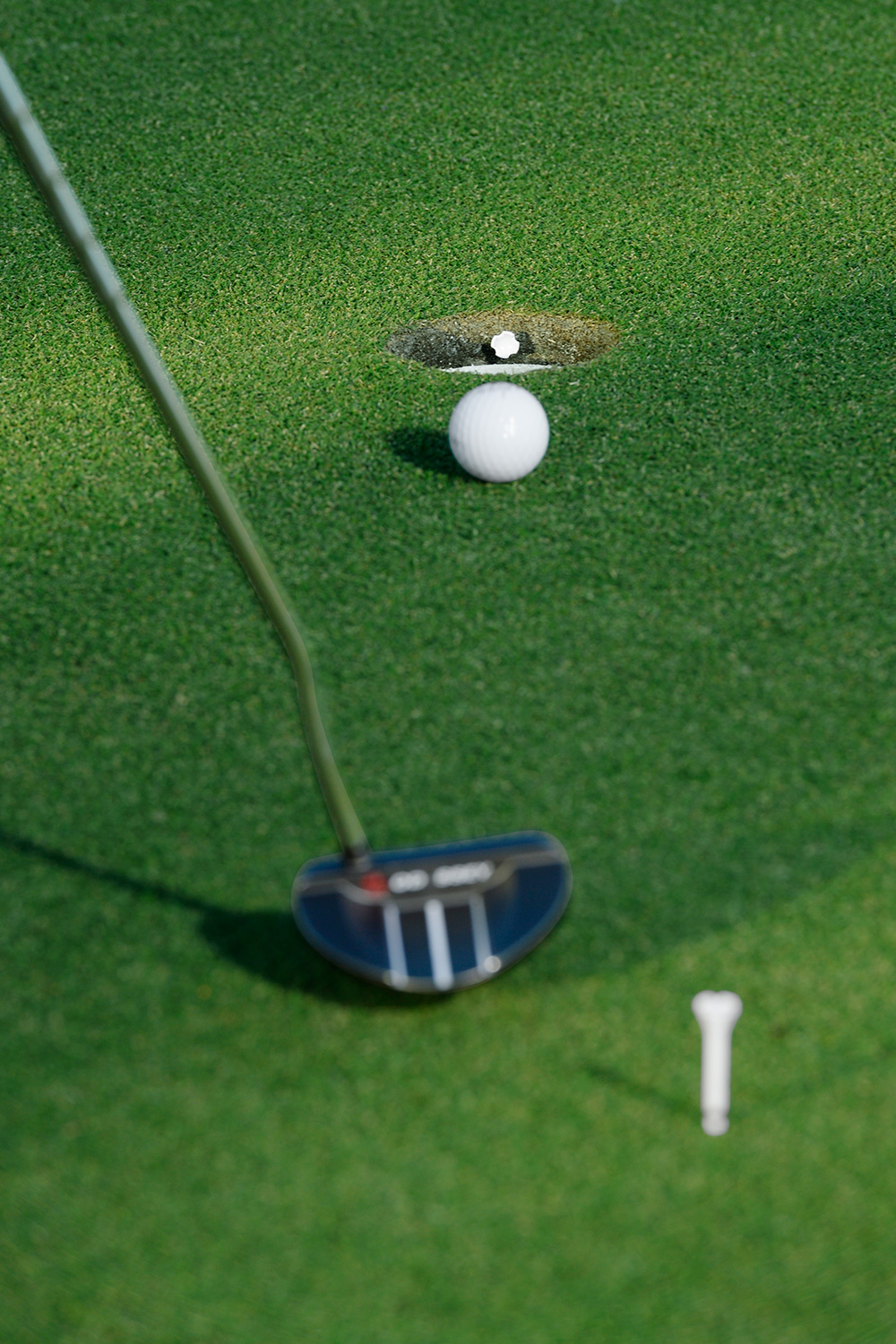I was never good at putting. I wasn’t even average. Truth? I was lousy. I had to get better to succeed on the US PGA Tour. It started with learning what I was doing wrong (besides missing the hole).
My former coach, Brett Saunders, used biomechanical-analysis software – like Trackman, but for putting – to look at what my stroke was doing to the ball. No surprise: my launch angle was off (yes, putts have a launch angle) and so was the amount of spin I put on the ball. To try to correct these issues, I went to a left-hand-low grip and a counterbalanced putter. That helped, but not without a lot of practice.
Now I’m proud to say my putting has substantially improved. In 2017 on the US Tour, I was top-20 in two important stats: strokes gained/putting and one-putt percentage. I also won the Valspar Championship and shot a 59 with 21 putts in the third round of the CareerBuilder Challenge.
If you’re lousy at putting, or just want to improve, some of the things I did can help you, too.
Read on for the details.

First thing you need to know is, you don’t have to trash your putter. I stuck with mine (an Odyssey Tank Cruiser). The familiarity helped develop better feel.
To improve my roll and get the ball started on the line I’ve chosen, I now play it slightly forward of centre in my stance, and I grip the putter with my palms facing each other, and the left hand lower than the right [above]. I grip it this way to minimise any unwanted movement of the putterhead when I make a stroke. This keeps the face square more consistently.

The main culprit for my putting woes was speed control, so I spend as much as 30 minutes a day practising all sorts of difficult putts – uphill, downhill, sidehill, over ridges, etc. A lot of golfers spend time practising medium-length flat putts, but I don’t think you get anything but comfort from that. I also do a drill where I lay a stick a couple of feet behind the hole – like a backboard. If I hit the stick, that’s no good. I start at 15 feet [above] and move back 15 feet at a time until I get about 45 feet away. I want to roll it close (or make it), but not hit it too far past.

If you want to avoid three-putts, getting it close is only half the task. You also have to make the short ones. To practise these, I focus on hitting the dead centre of the hole. I insert a tee in the back of the cup and another a few feet away as my starting point. I then try to hit 20 putts in a row that tap the tee before falling [left]. I do this to make sure I’m not getting lazy with my focus and stroke. You can still wiggle it in from short distances with a sloppy stroke, but if you continue to take these putts for granted, you’re going to miss one that really matters- – trust me. As you get better at this drill, start challenging yourself by taking on a more difficult three-footer, one with more slope. You know your speed, line and stroke are all good when it goes in dead centre on a breaking putt.
One final piece of advice: put the time in to get better. Those days when I don’t want to practise, I re-watch a video from the 2010 Canadian Open, my first US PGA Tour event. I drilled a 5-iron on a 205-yard hole to eight feet and had a straight, flat birdie putt. It didn’t touch the hole – not even close. I don’t ever want to do that again. And so far, I haven’t. Now you don’t have to, either.



